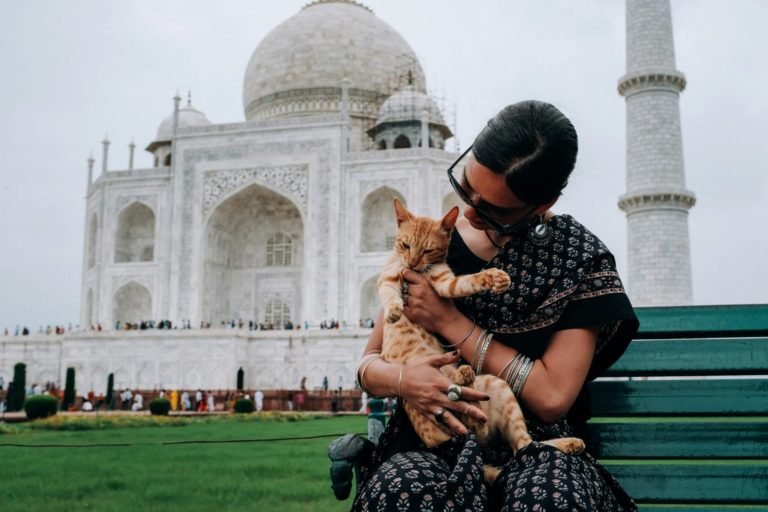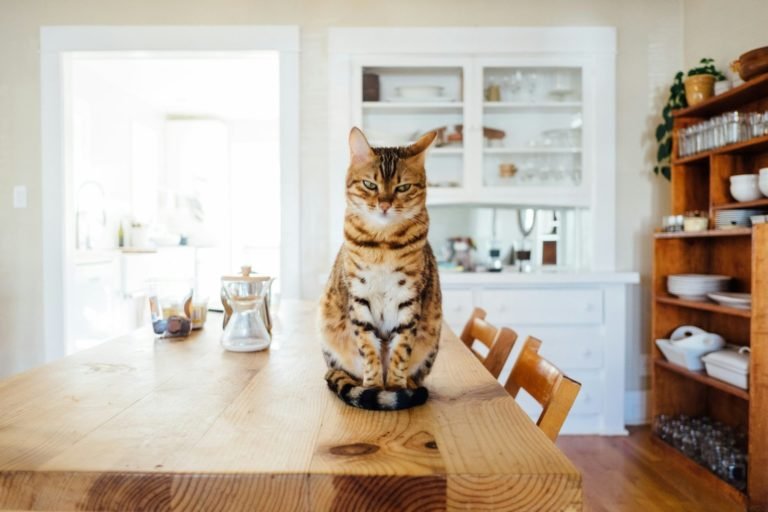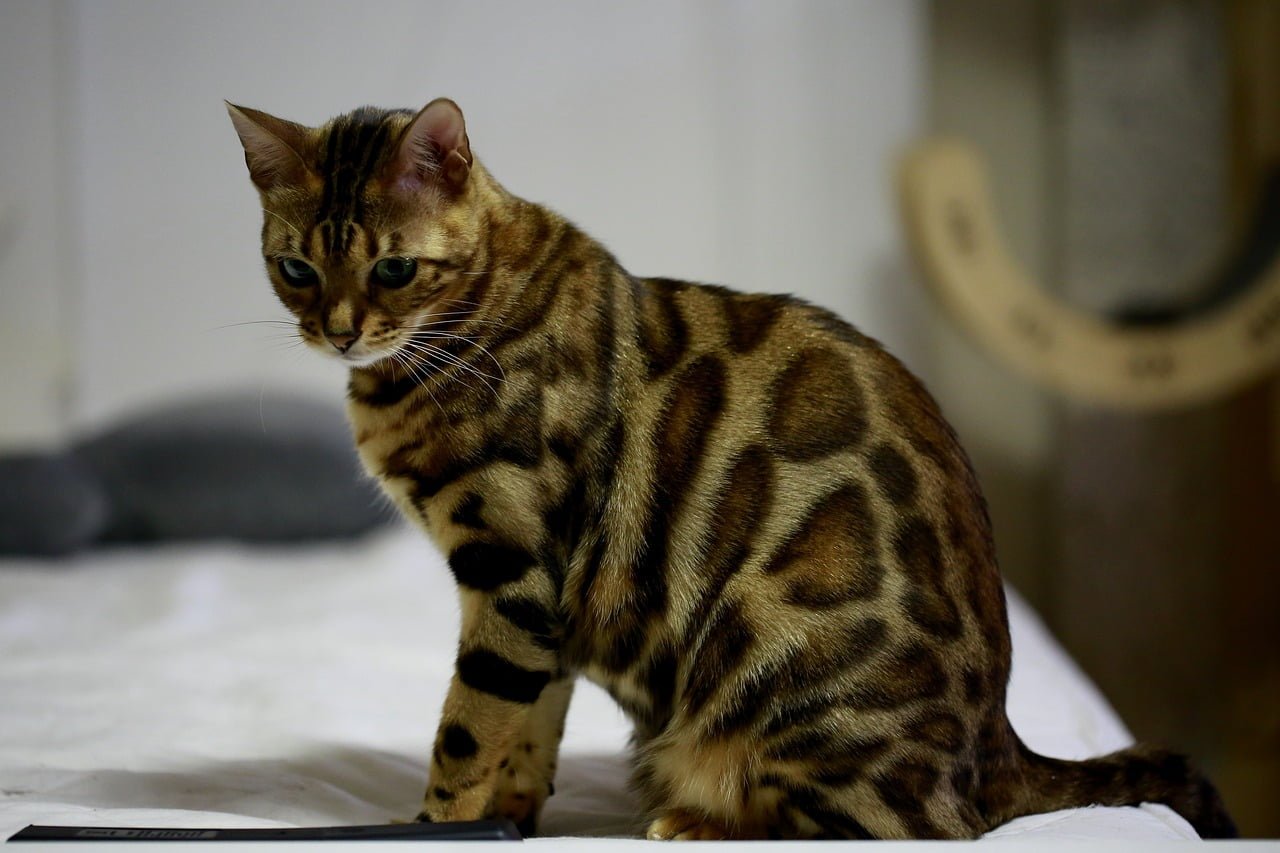
Imagine walking into your living room and coming face-to-face with a miniature leopard! Don’t worry, you’re not in the jungle – you’ve just met a Bengal cat!
These incredible felines are like having a piece of the wild right in your home, minus the danger and a whole lot of cuddles.
Picture this: a cat with a coat that shimmers like gold, covered in spots and swirls that look like nature’s finest artist painted them. Now add in eyes that sparkle with mischief, a purr that sounds like a sports car engine, and a personality that’s part acrobat, part comedian, and all love. That’s a Bengal cat for you!
But hold onto your catnip toys, folks, because we’re about to embark on a whisker-twitching adventure into the world of Bengal cats. We’ll explore their wild roots, their dazzling looks, and their larger-than-life personalities. Get ready to discover why these spotted sensations have taken the cat world by storm and stolen the hearts of pet lovers everywhere.
From their water-loving antics to their chatty conversations, Bengal cats are here to turn your idea of a typical house cat upside down. So, buckle up, cat fans! We’re about to dive into the fascinating universe of Bengal cats – where every day is a wild adventure, and boring is definitely not in the cat dictionary!
Are you ready to meet the cat that’s part leopard, part love bug, and all awesome? Let’s pounce right in!
What is a Bengal cat?
Have you ever seen a cat that looks like a tiny leopard? If so, you might have met a Bengal cat! These beautiful kitties are special because they look wild but act like house cats.
A Bengal cat is a breed of house cat that looks like a wild leopard or ocelot. They have spots or marbled patterns on their fur, just like big cats in the jungle. But don’t worry – Bengal cats are friendly pets, not wild animals!
The Bengal cat breed started in the 1960s when a woman named Jean Mill crossed a wild Asian leopard cat with a regular house cat. She wanted to make a cat that looked wild but acted tame. It took a lot of work, but finally, the Bengal cat was born!
Today, Bengal cats are popular pets all over the world. People love them because they look exotic and have fun personalities. Let’s find out more about what makes Bengal cats so special!
How the Bengal cat looks
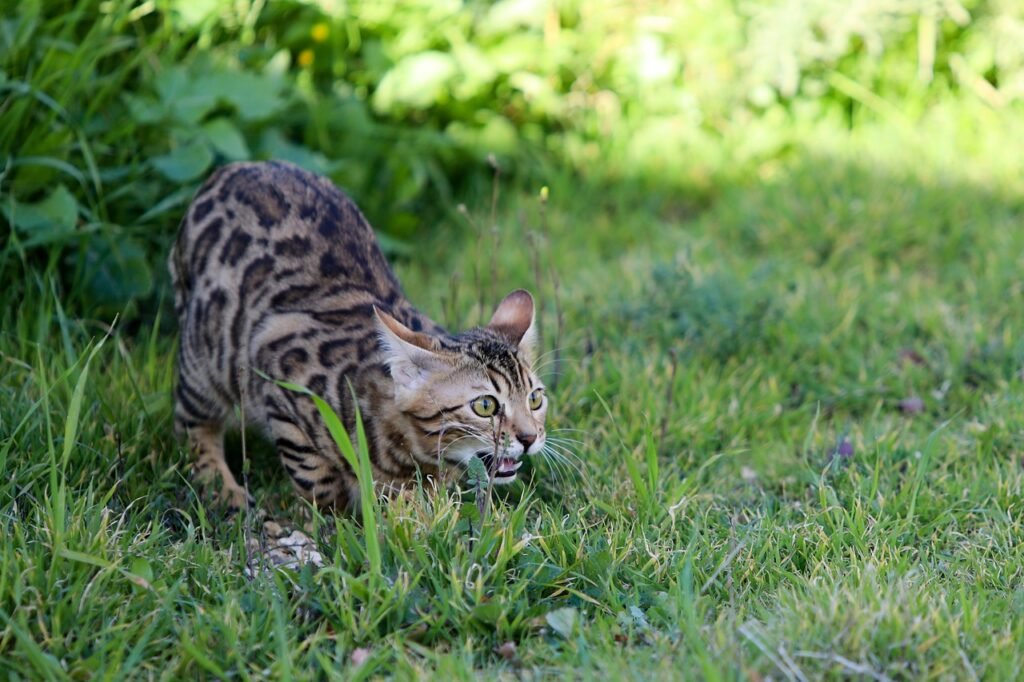
Bengal cats are medium to large-sized cats. They usually weigh between 8 and 15 pounds, with males being bigger than females. But what really makes them stand out is their beautiful coat!
Bengal cat fur comes in many colors, but the most common are:
1. Brown Spotted
2. Snow spotted
3. Silver-spotted
4. Brown marbled
5. Snow marbled
6. Silver marbled
The spots on a Bengal cat can be round, oval, or even shaped like arrowheads. Some Bengal cats have a marbled pattern that looks like swirls instead of spots. No matter what pattern they have, all Bengal cats have a soft, silky coat that feels great to pet!
One cool thing about Bengal cats is their glitter. Many Bengal cats have fur that seems to sparkle in the sunlight. This fur is called “glitter”, and it makes their coat look even more special.
Bengal cats also have other wild-looking features:
- Big, round eyes that can be green, gold, or blue
- Small, rounded ears
- A long, thick tail
- Strong, muscular bodies
All of these features make Bengal cats look like mini leopards, even though they’re just house cats!
Bengal Cat Personality
Bengal cats might look wild, but they act like loving pets. Here are some things you should know about Bengal cat personalities:
- They’re smart: Bengal cats are very intelligent. They can learn tricks and even how to open doors!
- They love to play: These cats have lots of energy and need plenty of toys and playtime.
- They like water: Unlike many cats, Bengal cats often enjoy playing in water. Some even like to swim!
- They’re curious: Bengal cats love to explore and check out new things in their home.
- They can be vocal: Many Bengal cats like to “talk” to their owners with meows and chirps.
- They’re affectionate: Bengal cats often bond closely with their families and enjoy cuddling.
- They need attention: These cats don’t like to be left alone for long periods. They want to be part of the family!
- They’re athletic: Bengal cats are great jumpers and climbers. They need tall cat trees and plenty of space to move around.
Because they’re so smart and active, Bengal cats need owners who can keep up with them. They’re not lazy lap cats – they want to play and explore all day long!
Taking care of Your Bengal cat
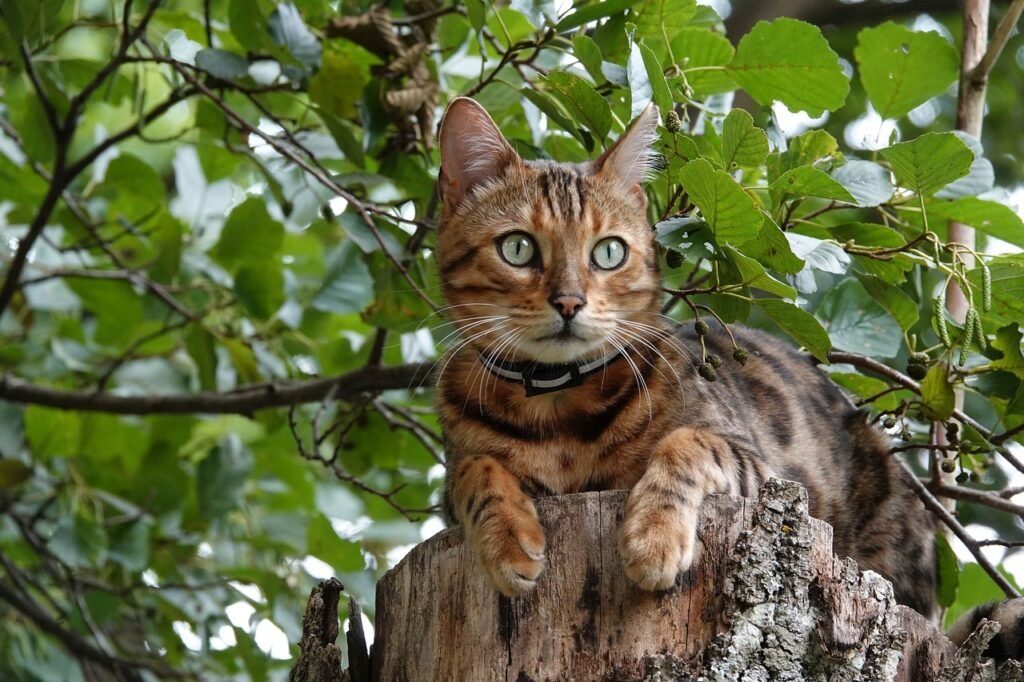
If you’re thinking about getting a Bengal cat, it’s important to know how to take care of them properly. These unique and energetic cats have specific needs that differ from other breeds. Here’s an in-depth look at how to keep your Bengal cat happy and healthy:
1. Playtime with Bengal Cat
Bengal cats are known for their high energy levels and need for mental stimulation. They require much more playtime than the average house cat. Aim for at least 30 minutes to an hour of interactive play each day, split into multiple sessions.
Recommended toys for your Bengal cat include:
- Interactive wand toys that mimic prey movement
- Puzzle feeders to challenge their minds
- Ball tracks that satisfy their urge to chase
- Crinkly toys that make noise (Bengal cats often live sound)
- Sturdy scratching posts to redirect their scratching instincts
Remember to rotate toys regularly to keep your Bengal cat interested. Some Bengal owners even teach their cats to play fetch!
2. Exercise for the Bengal Cat
Bengal cats are athletic and need plenty of opportunities to climb, jump, and explore. Create a cat-friendly environment that caters to their need for vertical space and exercise.
Consider installing:
- Tall cat trees (at least 6 feet high) with multiple platforms
- Wall-mounted shelves creating a “cat superhighway”
- Window perches for bird watching
- Cat exercise wheels for indoor running
- Safe outdoor enclosures or “catios” if possible
These additions not only provide exercise but also satisfy their instincts to climb and survey their territory from high vantage points.
3. Grooming the Bengal Cat
While Bengal cats have low-maintenance coats, regular grooming is still important for bonding and keeping their coat healthy.
Grooming routine of the Bengal cat:
- Brush once a week with a soft bristle brush or rubber grooming mitt
- Occasionally use a stainless steel comb to remove any loose undercoat
- Trim nails every 2-3 weeks
- Clean ears monthly with a gentle ear cleaner
- Brush teeth regularly with cat-safe toothpaste to prevent dental issues
Some Bengal cats enjoy being bathed, which can be a fun bonding experience if introduced properly.
4. Diet of Bengal Cat
Proper nutrition is crucial for maintaining your Bengal cat’s health and energy levels. These active cats often require more calories than other breeds.
Dietary considerations of the Bengal cat:
- Choose high-quality, protein-rich cat food (look for meat as the first ingredient)
- Consider a mix of wet and dry food for hydration and dental health
- Some owners opt for raw or homemade diets (consult with a vet first)
- Avoid overfeeding; use portion control to prevent obesity
- Treats should make up no more than 10% of their daily caloric intake
Always consult with your veterinarian to determine the best diet plan for your individual Bengal cat.
5. Water and the Bengal Cat
Bengal cats often have a fascination with water, which you can use to encourage proper hydration.
Water tips:
- Provide multiple water sources throughout your home
- Use wide, shallow bowls that don’t irritate their whiskers
- Consider a cat water fountain with moving water to attract their attention
- Some Bengals enjoy playing with dripping faucets or even joining you in the shower
- Always ensure fresh, clean water is available
Monitor your cat’s water intake, as proper hydration is essential for urinary tract health.

6. Litter Box Habits of the Bengal Cat
Bengal cats can be particular about their litter box habits. Keeping a clean litter area is crucial for preventing unwanted behaviors.
Litter box best practices:
- Provide one litter box per cat, plus one extra
- Scoop waste daily and do a deep clean weekly
- Use unscented, clumping litter (many Bengals prefer fine-grained litter)
- Choose large litter boxes to accommodate their size and digging habits
- Place litter boxes in quiet, accessible locations
- Consider automatic litter boxes for frequent cleaning
Some Bengal owners find that their cats prefer water-based cleaning methods, like toilet training or specialized cat toilet systems.
7. Vet care
Regular veterinary care is essential for keeping your Bengal cat healthy and catching any potential issues early.
Veterinary care schedule of your Bengal cat:
- Annual check-ups for adult cats
- Bi-annual check-ups for senior cats (7 years and older)
- Keep vaccinations up to date
- Regular deworming and flea prevention
- Discuss spaying/neutering with your vet
- Consider pet insurance to help with unexpected medical costs
Be sure to find a vet experienced with Bengal cats, as they may have specific health considerations.
8. Training
Bengal cats are intelligent and can learn various commands and tricks. Positive reinforcement training can provide mental stimulation and strengthen your bond.
Training tips:
- Use clicker training for precise timing
- Teach basic commands like “come,” “sit,” and “stay”
- Many Bengals can learn to walk on a leash with proper training
- Use training sessions to redirect unwanted behaviors
- Keep sessions short (5-10 minutes) but frequent
- Always end on a positive note
Remember, consistency and patience are key when training any cat.
9. Companionship
Bengal cats are social creatures and form strong bonds with their families. They require plenty of interaction and don’t do well when left alone for long periods.
Ensuring companionship:
- Spend quality time interacting with your Bengal cat daily
- Consider adopting two Bengal cats so they can keep each other company
- If you work long hours, arrange for a pet sitter or family member to visit
- Provide environmental enrichment like cat TV or window perches for when you’re away
- Some Bengals do well with cat-friendly dogs as companio
10. Safety
Bengal cats are curious and clever, which means you’ll need to take extra precautions to keep them safe.
Cat-proofing your home:
- Secure window screens to prevent falls
- Keep toxic plants, chemicals, and small objects out of reach
- Use child locks on cabinets and drawers
- Ensure all escape routes are blocked, including small openings in walls or foundations
- Be cautious with strings, cords, and ribbons that could pose a choking hazard
- Consider microchipping your Bengal cat for identification
Bengal Cat Health and Wellbeing
Bengal cats are generally healthy, but like all breeds, they can have some health issues. Here are some things to watch out for:
- Heart problems: Some Bengal cats can develop heart disease. Regular vet check-ups can help catch this early.
- Eye problems: Bengal cats can sometimes have eye issues like cataracts or progressive retinal atrophy.
- Hip dysplasia: This is a problem with the hip joint that can cause pain and lameness.
- Patellar luxation: This is when the kneecap slips out of place. It’s more common in Bengal cats than in some other breeds.
- Anesthetic sensitivity: Some Bengal cats are sensitive to certain types of anesthesia. Always tell your vet that your cat is a Bengal before any procedures.
Remember, not all Bengal cats will have these problems. Good care and regular vet visits can help keep your Bengal cat healthy for many years!
Bengal cats and families

Are Bengal cats good family pets? The answer is yes, but with some things to consider:
- Children: Bengal cats can be great with kids because they’re playful and active. However, they might be too energetic for very young children.
- Other pets: Many Bengal cats get along well with other cats and even dogs. But remember, every cat is different. Some might prefer to be the only pet.
- Space: Bengal cats need room to run and play. They’re best for homes with plenty of space, not small apartments.
- Time: These cats need lots of attention and playtime. They’re not good for families who are away from home a lot.
- Noise: Bengal cats can be vocal. If you like a very quiet home, this might not be the right breed for you.
- Cost: Bengal cats can be expensive to buy and care for. Make sure you’re ready for the cost before getting one.
- Legality: In some areas, Bengal cats might be restricted or even illegal. Check your local laws before getting one.
If you can provide a loving home with plenty of play and attention, a Bengal cat could be a wonderful addition to your family!
Choosing Bengal cats
If you’ve decided a Bengal cat is right for you, here’s how to choose a good one:
- Find a reputable breeder: Look for a breeder who cares about their cats’ health and temperament. They should let you visit and see where the cats live.
- Check health: Ask to see health certificates for the kitten and its parents. A good breeder will have these.
- Meet the parents: If possible, meet the kitten’s parents. This background information can give you an idea of what your kitten will be like when it grows up.
- Observe behavior: Spend time with the kitten before taking it home. Look for a friendly, curious kitten that isn’t shy or aggressive.
- Ask questions: A good breeder will be happy to answer all your questions about Bengal cats.
- Consider adoption: There are Bengal cats in shelters and rescues, too. Adopting can be a great way to give a home to a cat in need.
Remember, choosing a cat is a big decision. Take your time and make sure you’re ready for the commitment before bringing a Bengal cat home.
Living with a Bengal cat
Life with a Bengal cat is never boring! Here’s what you can expect when you bring one of these beautiful cats into your home:
- Lots of energy: Bengal cats are always on the go. They love to run, jump, and play. Be ready for a very active pet.
- Water fun: Don’t be surprised if your Bengal cat joins you in the shower or plays in their water bowl. Many of them love water!
- High places: Bengal cats like to climb and perch in high spots. You might find your cat on top of the fridge or bookshelf.
- Smart tricks: These clever cats can learn to do tricks like fetching or even walking on a leash.
- Curious explorers: Bengal cats want to check out everything in your home. Make sure to keep small objects away so they don’t become cat toys.
- Talkative friends: Many Bengal cats are vocal and will “chat” with you throughout the day.
- Affectionate companions: While they’re not typically lap cats, Bengal cats often form strong bonds with their families and show lots of affection.
- Feeding time fun: Some Bengal cats like to play with their food or even try to “fish” for it in their water bowl.
- Outdoor interest: Bengal cats often love to watch the outdoors. A cat tree by a window can provide hours of entertainment.
- Need for interaction: These social cats don’t like to be left alone for long. They want to be part of whatever you’re doing.
Living with a Bengal cat means having a fun, active, and loving companion. They keep life interesting and are sure to make you smile every day!
Bursting the Myths about the Bengal Cat
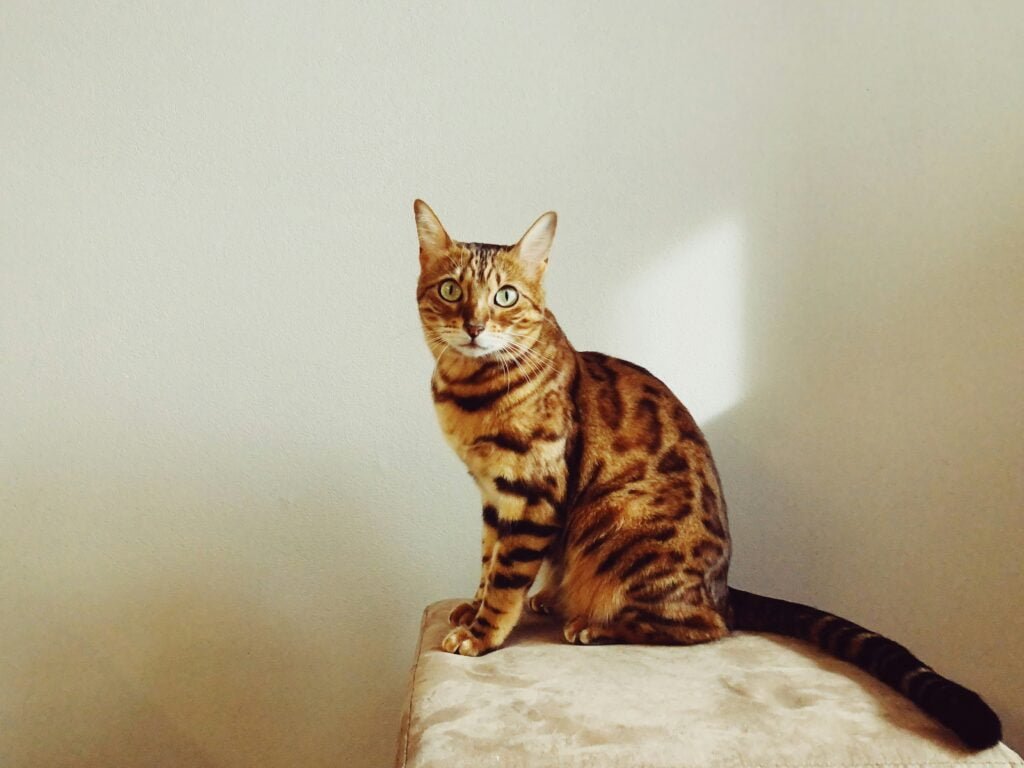
There are some myths about Bengal cats that aren’t true. Let’s clear them up:
Myth 1: The Bengal cat is a wild animal
Truth: Bengal cats are domestic pets. They may look wild, but they’re as tame as any other house cat.
Myth 2: Bengal cat is aggressive
Truth: Bengal cats are usually friendly and gentle when raised properly.
Myth 3: Bengal cat can’t be an indoor pet
Truth: Bengal cats can be happy living indoors as long as they get enough play and attention.
Myth 4: Bengal cat does not shed
Truth: All cats shed some, including Bengal cats. They just tend to shed less than some other breeds.
Myth 5: Bengal cats are hypoallergenic.
Truth: No cat is truly hypoallergenic. Some people might be less allergic to Bengal cats, but they can still cause allergies.
Myth 6: The Bengal cat is just like a wild leopard
Truth: While they look similar, Bengal cats behave very differently from wild cats. They’re domestic pets through and through.
Conclusion
Bengal cats are truly special pets. They combine the wild beauty of a leopard with the loving nature of a house cat. While they need lots of attention and care, Bengal cats can be wonderful companions for the right families.
Remember, getting any pet is a big decision. If you’re thinking about a Bengal cat, make sure you’re ready for an active, smart, and curious kitty. With the right care, a Bengal cat can bring years of joy and excitement to your home.
Whether you decide to get a Bengal cat or not, we can all appreciate how amazing these beautiful cats are. From their spotted coats to their playful personalities, Bengal cats are truly one-of-a-kind!


